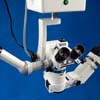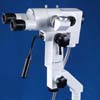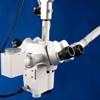Laser Eye Surgery
Ocular or eye surgery is any kind of operation performed to correct eye defects and diseases. Eye diseases like cataract can be removed by eye surgery, but the more common operations on the eye today are those that correct vision disorders like near or far sightedness and astigmatism. Refractive surgery, as this operation is called, are done by reshaping the cornea to allow light rays to enter the eye properly and focusing on the retina. The old method of doing this involved making incisions on the cornea in a spoke pattern in order to flatten the curvature of the cornea (radial keratotomy). But while this method is still being used to correct minor myopia, radial keratotomy (RK) may actually weaken the structure of the eye and is not highly recommended by some ophthalmologists. This is because the incisions done during this kind of surgery actually penetrate 90 percent of the cornea. Also, patients who have already undergone RK cannot have repeat the operation or go through other ocular surgeries.The use of an excimer laser in performing eye surgery had been approved back in 1995, with the actual laser eye surgery restricted to be done by an ophthalmologist with the proper training. In spite of the rising popularity of this kind of ophthalmic eye surgery, however, it may be noted that only a few surgeons or ophthalmologist have the actual training to operate and calibrate the excimer laser used in laser eye surgery. Skills are very much important since eye surgeries are mostly delicate operations and while there has been no reports of any ocular surgery resulting to blindness, there are also enough complications that can happen that gives patients pause before considering undergoing laser eye surgery. One other concern is what kind of method the ophthalmologist would follow in the correction of vision defects. One method is Photorefractive Keratectomy (PRK), which involves the removal of the epithelium of the cornea in order for the laser to penetrate the cornea and make the necessary adjustments. The recovery time for PRK is quite long, since it takes a while for the epithelium to heal, aided by a bandage contact lens. There might also be minor discomfort felt during the surgery itself.
For a relatively painless treatment, however, Laser-Assisted in situ Keratomileusis (LASIK) is recommended. The recovery time for this method is fast enough that the patient can have good vision enough to be able to drive a week after the operation. LASIK is done by cutting a flap from the epithelium of the cornea by using an ophthalmic instrument called a microkeratome. This is a surgical tool that has an oscillating blade that can cut through the topmost layer of the cornea. This has to be done because the epithelium has great regenerative properties and can give the excimer laser difficulty in doing the corrections in the stroma of the cornea. Because it doesn’t entail the actual removal of the epithelium as with PRK, the eye heals faster with the LASIK procedure.
Before the LASIK operation, the patient would be advised to forgo the use of soft contact lenses for about one to three weeks. People who wear hard contact lenses have to stop using them for around six weeks or more. Using a pachymeter, the ophthalmologist would measure the thickness of the cornea and a topographer to make a map of its contours. This is to allow the ophthalmologist to decide beforehand the necessary adjustments that they have to do on the cornea to allow light rays to enter the eye properly and focus on the retina.
During the operation, the patient might be given a mild sedative and anaesthetic eye drops. Moving the head or the eyes during the operation would be quite fine, since the laser is equipped with an eye tracker that can follow and adjust to the small movements of the eye. The laser shuts down automatically if the eye moves too much and will only resume working once the eyes have focused again. The patient might suffer from light sensitivity and mild eye irritation after the procedure, but these will last for only a few hours. Normally, the patient will be able to have improved sight three to five weeks after the operation. The use of antibiotics and anti-inflammatory eye drops may be recommended as well as wearing a pair of sunglasses to protect the eyes.
There are some LASIK-related complications that may occur because of the flap cut into the corneal epithelium. For example, the flap could heal irregularly, distorting the corneal shape that could make the patient’s vision somewhat blurry. A subconjunctival hemorrhage or bleeding under the conjunctiva of the eye is a minor complication that will heal several days after the surgery. There are also some cases of under or overcorrection that has left some patients who have undergone LASIK dissatisfied with the results of the operation.
Patients who wish to undergo laser eye surgery have things to consider before actually deciding to go through with it. The results of the ocular surgery may differ for each person, and those people who heal slowly, those with chronic illnesses (like diabetes) or even those with vascular diseases may consider not going through the surgery at all. Pregnant women should not undergo any kind of refractive surgery since the eyes can have different refractive capabilities during pregnancy. Knowing the risks involved and weighing them carefully against the benefits is important before going through with these kinds of procedures.
Back to Articles
call toll-free:  or email
or email

 or email
or email
Categories
Categories
Dental
Dental Microscopes
Dental Microscopes
Ophthalmic
Ophthalmic Microscopes
Ophthalmic Microscopes
Gynecology
Gynecology Colposcopes
Gynecology Colposcopes




